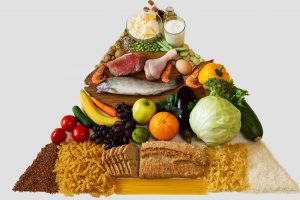
For the 1 in 10 Australian women with endometriosis [1], the experience of pain is pretty common. While medication can be used to reduce pain, it often doesn’t provide enough pain relief, or it has some unwanted side effects. For this reason, around three-quarters of women with endometriosis use self-care strategies to help reduce pain, as well as treat their cramps, bloating, fatigue and nausea.
Before we get into some self-care methods that may help ease these symptoms, let’s find out exactly what endometriosis is.
If you already know, scroll straight down to our self-care strategies!
What is endometriosis?
Endometriosis is a condition where tissue, similar to the tissue that naturally forms the lining on the inside of your uterus, grows outside of the uterine cavity. This endometrial tissue can grow on your ovaries, fallopian tubes, bowel and the tissue lining your pelvis. It can, although rarely, spread further beyond your pelvis region, and in severe stages, internal organs can be fused together by the endometrial tissue. This causes a condition known as ‘frozen pelvis’.
You may know that the hormones estrogen and progesterone naturally change across the menstrual cycle. For those with endometriosis, these changes can bring on severe pain. This is because the hormones cause the endometrial tissue to grow, thicken and break down. Once it is broken down, it has nowhere to go and remains trapped inside the pelvis. This trapped tissue can lead to irritation, scar formation and adhesions.
Endometriosis symptoms
The severity of endometriosis symptoms varies among women. These can include:
- Pelvic pain – most common
- Painful periods
- Pain in the lower abdomen (belly) before and during menstruation
- Cramps one or two weeks around menstruation
- Heavy menstrual bleeding or bleeding between periods
- Infertility
- Pain following sex
- Digestive problems – diarrhea, constipation, feeling bloated
- Nausea
It is important to recognise that the severity of symptoms does not always relate to the severity of the condition. In other words, you can have very painful symptoms, but this doesn’t necessarily mean you have extensive tissue growth. This works both ways – some women may experience very mild symptoms or even no symptoms but have severe internal tissue growth.
There is no need to put up with severe pain, especially if it means you are missing out on normal life activities, like work or school. Help is available.
If you are experiencing symptoms, severe cramps or pelvic pain, go to your GP or gynaecologist. They will organise some tests to find out the cause. This may include an ultrasound, other imaging techniques or a laparoscopy. A laparoscopy is a surgical keyhole procedure where, under anaesthetic, a thin tube containing a camera is inserted through a small incision on your abdomen (belly) to visualise inside your abdominal and pelvic region. Having an internal examination can be mildly- to completely nerve-wracking, but it is important to know what is causing these symptoms. Talk to your doctor to understand what is involved and feel free to ask any questions. Writing these down beforehand can help you remember.
Self-management strategies for relieving endometriosis pain
Researchers at Western Sydney University conducted a survey of Australian women with endometriosis to find out their top methods for self-managing pain and other endometriosis symptoms [2]. The top results, published last year in BMC Complementary and Alternative Medicine, are listed below, together with a description of their use
1. Heat
Using heat around your pelvic region is the most common way women manage their pain and endometriosis symptoms [2]. Heat helps relax the muscles of the uterus, increase blood flow and ease pain. Heat can be applied using heat-packs, hot water bottles, heat patches or baths. It is important to be careful when using heat to avoid burns. Heat patches are an effective way to deliver consistent heat for up to 12 hours. You can find heat patches at supermarkets or pharmacies.
2. Diet
Some women find changing their diet helps to minimise symptoms and pain. The challenge, however, is that no single diet works for everyone. One diet that is commonly used in endometriosis management where there are also gut symptoms is the low-FODMAP diet. This diet can help some women by decreasing bloating, cramping, diarrhea and constipation.

FODMAP is an acronym that stands for Fermentable Oligosaccharides, Disaccharides, Monosaccharides And Polyols. Together, this is a group of carbohydrates that feed the normal bacteria that line the gut.
Some fruits, vegetables and dairy products have higher FODMAP concentrations than others, such as garlic, onion, apples, milk and yoghurt. While these are healthy foods, some people may find they react badly to one or more of these, and feel bloated. This can lead to increased pain for women with endometriosis, especially if you are already experiencing cramps.
If you are thinking about trying a low FODMAP diet, it is highly recommended to speak to a dietitian who has experience with this diet before starting. This is because there is a specific process which helps to discover which FODMAP foods may be triggers for you in the shortest time possible. This is important, as many high FODMAP foods are important for gut health and shouldn’t be avoided for too long. Identifying quickly which foods do and don’t need to be avoided means you can return to a normal healthy diet in the shortest time possible.
If this sounds like something you would like to try, chat to your GP or a dietitian who can help personalise your plan.
3. Exercise
It may be the last thing you feel like doing but some women find that exercise improves their endometriosis symptoms. Exercising releases endorphins, naturally occurring hormones that make you feel good, and can act to naturally relieve pain. Exercising also improves blood circulation and lowers estrogen levels, which can help with endometriosis pain. It doesn’t have to be 100 burpees either! Even a walk around the block can help to manage pain.
4. Track your period and your endometriosis pain
Tracking your cycle is a great way to understand your body and your symptoms. It also is a good way to explain your symptoms to your doctor.
Endometriosis symptoms tend to follow a cycle, similar to your period. If you track these on a monthly basis, you are likely to notice a pattern. This means you can prepare yourself (mentally and physically) for endometriosis symptoms and pain.
There are some great apps for tracking your symptoms such as Visana and Endometrix. Both of these are available for free on the App Store or Android Store.
Endometriosis Australia has also developed a great pain tracking tool.
5. Meditate

Living with endometriosis can be both physically and mentally exhausting. Meditation can help you to cope with pain, stress and fatigue.
Many women find taking time to be mindful, noticing their thoughts, emotions and senses is a helpful way to manage their pain and other symptoms.
You could also head to a Yoga class to combine exercise and meditation.
6. Rest – get a good night’s sleep
Getting a good sleep can be easier said than done if you are experiencing endometriosis symptoms during the night. If you are tired or fatigued, you may begin to notice more severe pain or symptoms, making it extra important to get a good night’s rest.
You may like to try a few things to help unwind at night-time and improve your sleep. This can include eating dinner and exercising earlier in the day, and avoiding screen time in the hour before bed.
Having a regular sleeping schedule can also help your body adjust to a healthy sleep routine. Try what works for you. Proper rest is essential for good health.
Key Messages
- If you are experiencing pain and other symptoms of endometriosis, it may be worth trying one or all of these tips that other women report as being useful.
- It is important to care for your mind and body when experiencing pain.
- Self-care for endometriosis is all about finding what works for you. Take some time to trial different methods and do what feels right for you!
Expert review
The content in this article has been reviewed by Dr Judith Moore, who is a functional gut nurse consultant at Alfred Hospital in Melbourne, and a researcher in the Department of Gastroenterology, Central Clinical School at Monash University. Dr Moore’s research seeks to cast more light on how endometriosis affects the gut, and if it affects the microbiome in the gut. She is also exploring different dietary options to see if this impacts gut symptoms and the gut microbiome in women with endometriosis also experiencing symptoms such as bloating, an altered bowel habit and gut pain.
References
- Australian Coalition for Endometriosis. https://www.acendo.com.au/
- Armour, M., Sinclair, J., Chalmers, K.J. et al. Self-management strategies amongst Australian women with endometriosis: a national online survey. BMC Complement Altern Med 19, 17 (2019). https://doi.org/10.1186/s12906-019-2431-x







